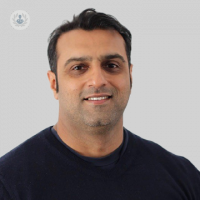What causes adolescent scoliosis?
Autore:Adolescent scoliosis is a condition characterised by an abnormal curvature of the spine that typically develops during the growth spurt just before puberty, usually between the ages of 10 and 18. While scoliosis can occur in both boys and girls, it is more commonly diagnosed in girls.

Causes
The cause of adolescent scoliosis is often unknown and referred to as idiopathic scoliosis, although genetics may play a role, as the condition tends to run in families.
Symptoms
The most noticeable symptom of adolescent scoliosis is the visible curvature of the spine, which may cause one shoulder to appear higher than the other, or one hip to be more prominent. Other symptoms can include uneven shoulders or waist, leaning to one side, or a rib hump when bending forward.
In many cases, scoliosis does not cause pain in adolescents, but in more severe cases, it can lead to discomfort, back pain, and in rare instances, breathing difficulties due to the compression of the lungs and heart.
Diagnosis
The diagnosis of scoliosis typically involves a physical examination and imaging tests such as X-rays, which help determine the degree of spinal curvature. A curve greater than 10 degrees is considered scoliosis, with mild cases being between 10 to 20 degrees and more severe cases being 45 degrees or higher.
Treatment
Treatment for adolescent scoliosis depends on the severity of the curve and the risk of progression. Mild cases often require only regular monitoring by a doctor, while moderate cases may be treated with a back brace to prevent the curvature from worsening.
The brace is typically worn for most of the day until the child stops growing. In severe cases, where the curve exceeds 45 degrees or is worsening rapidly, surgery may be recommended. The most common surgical procedure is spinal fusion, where the vertebrae are fused together to prevent further curvature.
Early detection of scoliosis is essential for effective treatment and to prevent complications later in life. Regular check-ups during adolescence can help identify scoliosis early, allowing for timely intervention and better outcomes.


